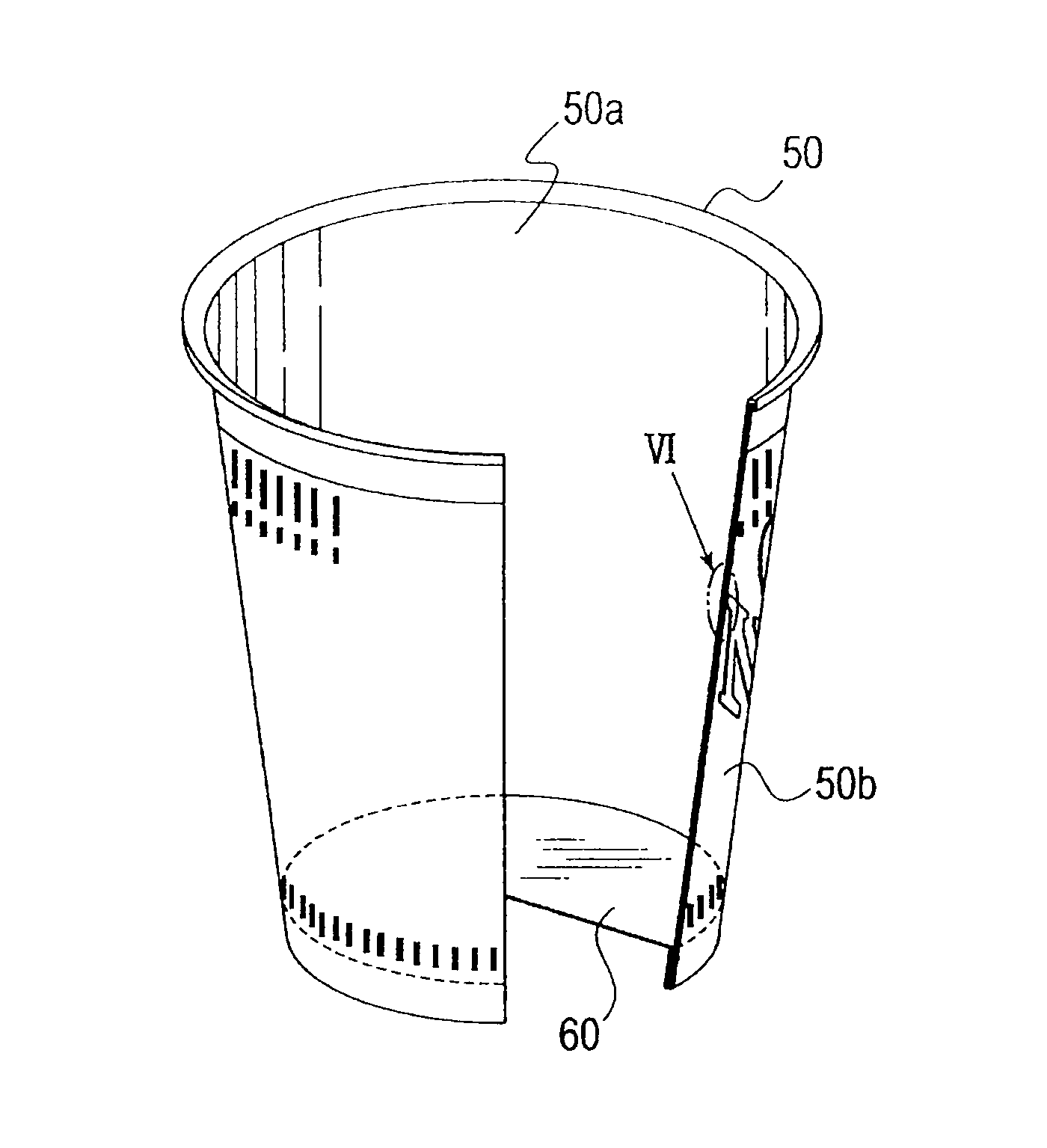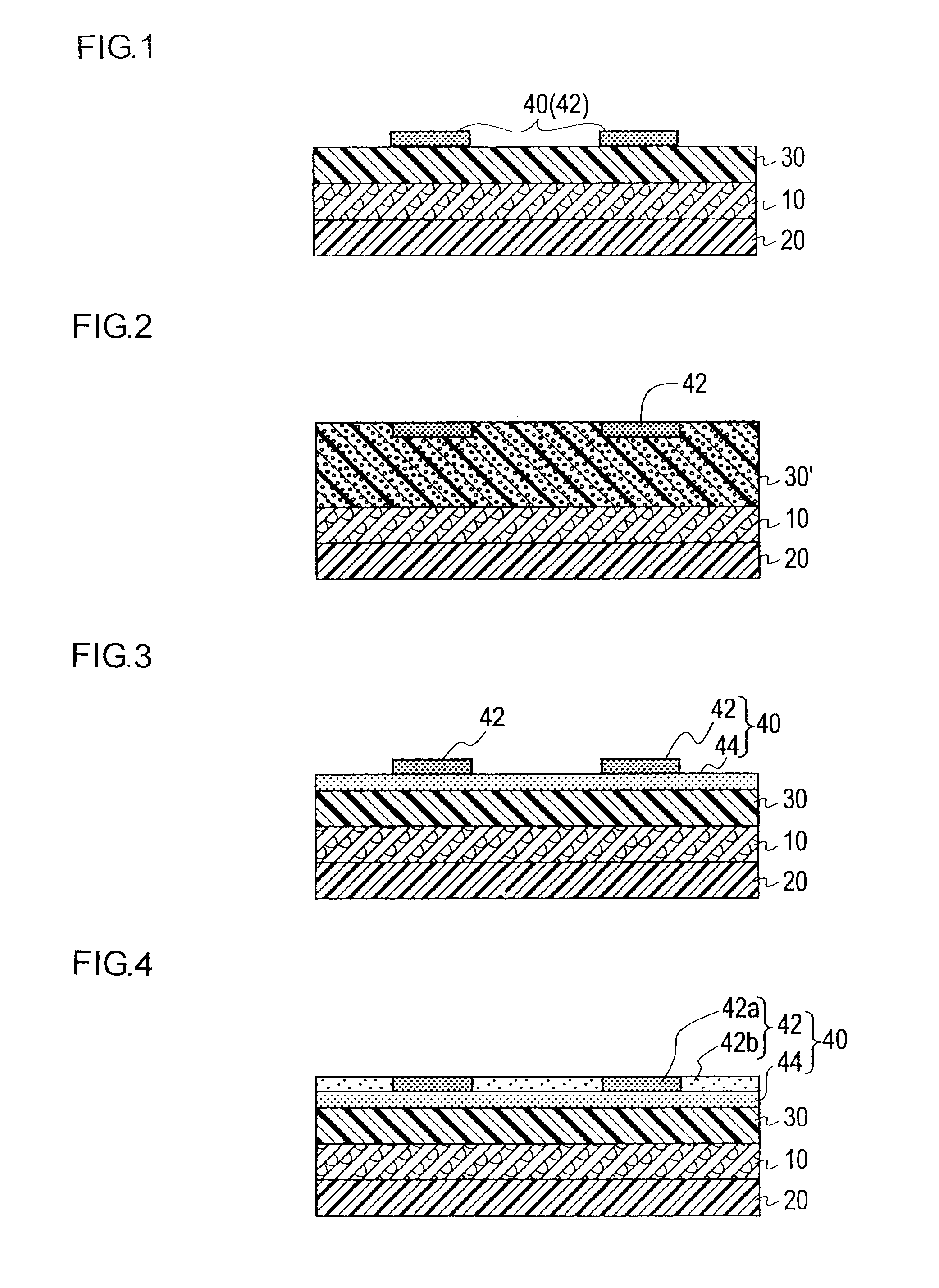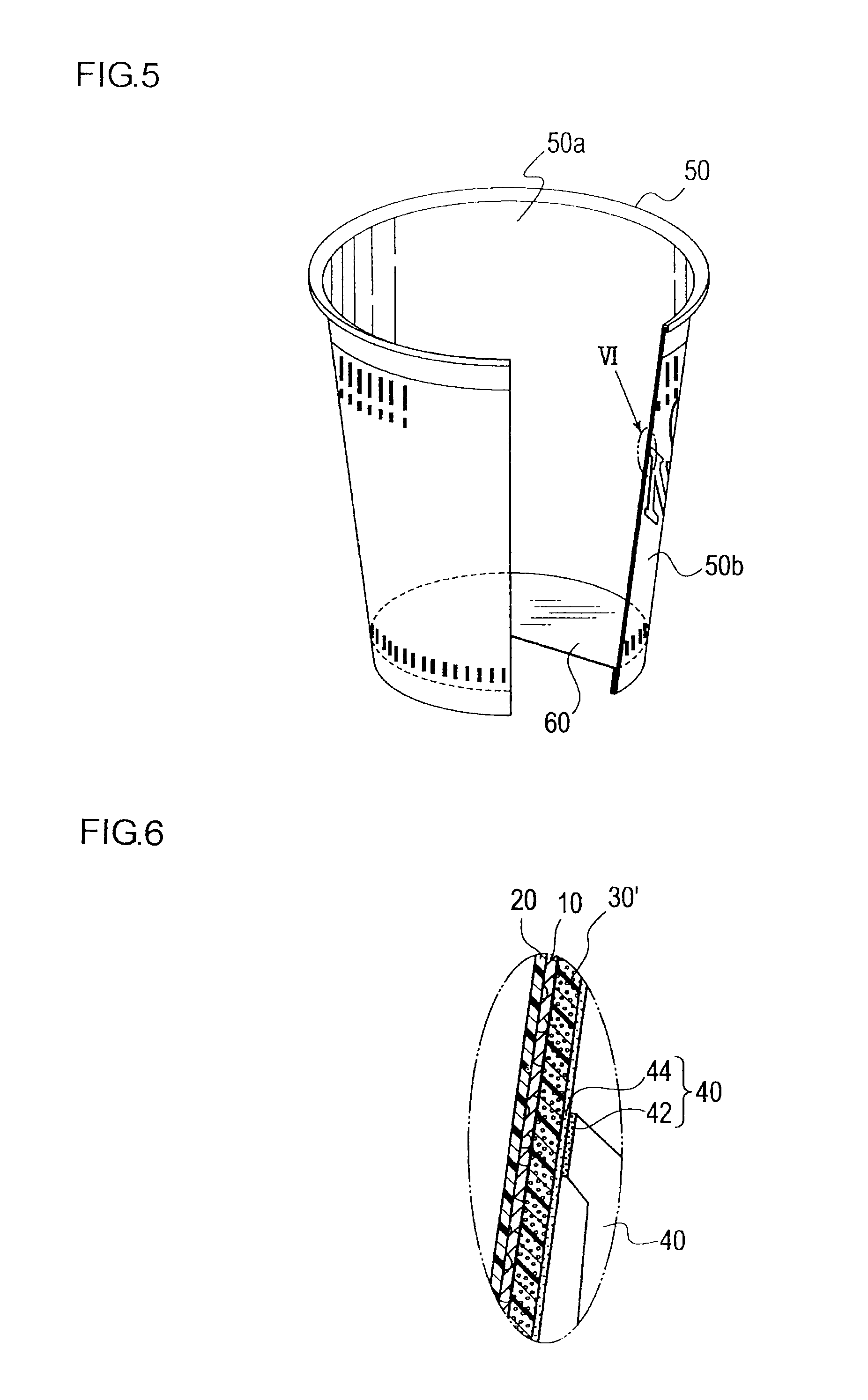Brightening ink composition for printing, paper container material using the brightening ink composition, and heat insulating foamed paper container
a brightening ink and composition technology, applied in the direction of rigid containers, containers for heating food, synthetic resin layered products, etc., can solve the problems of uneven surface, inability to meet the design applicability and heat insulation properties, and uneven surface at the printed surface, etc., to achieve excellent printing quality, excellent external appearance, and excellent in the various resistances required of ink.
- Summary
- Abstract
- Description
- Claims
- Application Information
AI Technical Summary
Benefits of technology
Problems solved by technology
Method used
Image
Examples
preparation example 1
Preparation of Polyurethane Resin Varnish
[0141]313 parts of a polypropylene glycol having a number average molecular weight of 2,000, 63 parts of isophorone diisocyanate, and 60 parts of ethyl acetate were fed into a four-necked flask equipped with a stirrer, a thermometer, a reflux cooler and a nitrogen gas inlet tube, and the mixture was allowed to react for 6 hours at 90° C. under a nitrogen gas stream. Thus, a prepolymer was obtained. Subsequently, this prepolymer was added dropwise into a mixture of 21 parts of isophorone diamine, 360 parts of ethyl acetate, and 180 parts of isopropyl alcohol, and the chain length was extended. Thereby, a polyurethane resin varnish (PU varnish) was obtained. This polyurethane resin varnish (PU varnish) had a solids content of 40%, a viscosity at 25° C. of 200 mPa·s, and a weight average molecular weight of 9,000. The measurement of the molecular weight was carried out using SHODEX DS-4 (manufactured by Showa Denko K.K.) equipped with a UV detec...
preparation example 2
Preparation of Vinyl Chloride-Vinyl Acetate Copolymer Varnish
[0142]25 parts of a vinyl chloride-vinyl acetate copolymer (SOLBINTA5R, manufactured by Nissin Chemical Industry Co, Ltd.) was mixed and dissolved in 75 parts of ethyl acetate, and thus a solution of a vinyl chloride-vinyl acetate copolymer varnish for a test (PVC-PVAc varnish) was obtained.
example 1
1. Preparation of Brightening Ink
[0143]45 parts of the polyurethane resin varnish obtained in the Preparation Example 1, 8 parts of the vinyl chloride-vinyl acetate copolymer varnish (PVC-PVAc varnish) obtained in the Preparation Example 2, 15 parts of a non-leafing aluminum paste (ALPASTE 1100TA manufactured by Toyo Aluminum K.K.; solids content 65%, particle size 12 μm), 2.5 parts of untreated silica (SYLYSIA 450 manufactured by Fuji Silysia Chemical, Ltd.; particle size 5.2 μm), and 29.5 parts of a mixed solvent containing methylcyclohexane:isopropyl alcohol:ethyl acetate=40:40:20 (weight ratio) were blended, and then the mixture was stirred over 20 minutes with a disper. Thus, a brightening ink was obtained.
2. Preparation of White Ink
[0144]12 parts of the polyurethane resin varnish obtained in the Preparation Example 1, 19.2 parts of the vinyl chloride-vinyl acetate copolymer varnish (PVC-PVAc varnish) obtained in the Preparation Example 2, 40 parts of titanium oxide (TITANIX JR...
PUM
| Property | Measurement | Unit |
|---|---|---|
| particle size | aaaaa | aaaaa |
| melting point | aaaaa | aaaaa |
| melting point | aaaaa | aaaaa |
Abstract
Description
Claims
Application Information
 Login to View More
Login to View More - R&D
- Intellectual Property
- Life Sciences
- Materials
- Tech Scout
- Unparalleled Data Quality
- Higher Quality Content
- 60% Fewer Hallucinations
Browse by: Latest US Patents, China's latest patents, Technical Efficacy Thesaurus, Application Domain, Technology Topic, Popular Technical Reports.
© 2025 PatSnap. All rights reserved.Legal|Privacy policy|Modern Slavery Act Transparency Statement|Sitemap|About US| Contact US: help@patsnap.com



